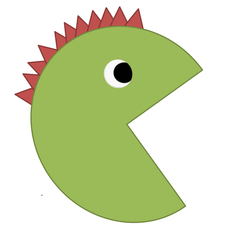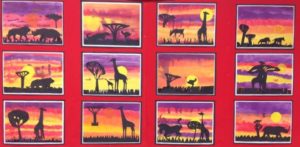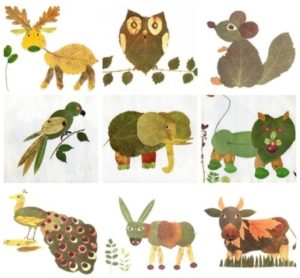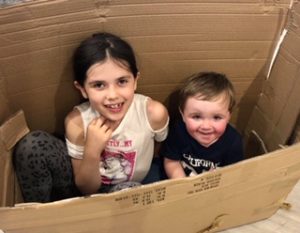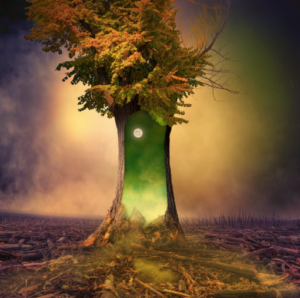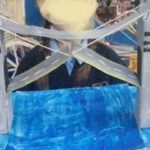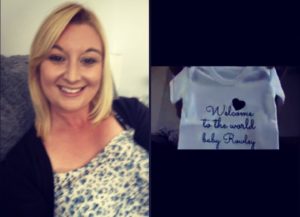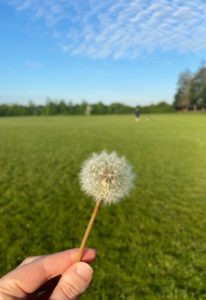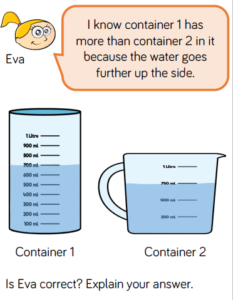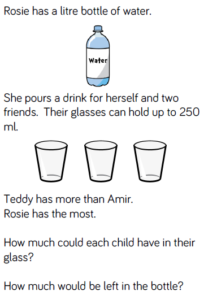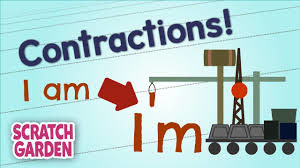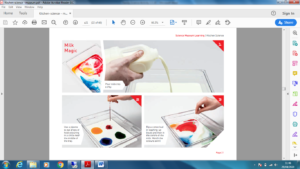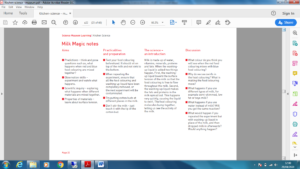29th May 2020 – Home Learning
We hope you’ve had a restful half term and have been enjoying the beautiful sunshine! We can’t believe the final half term of the year is here. As always, we’re missing you lots and hoping to see you lovely faces soon 🙂
Here is the home learning for the week ahead…
Topic:
Locate China on a world map/ globe. What continent is it on? What countries does it border? Which sea is it near?
Speak to people you know, use books/ internet to make a fact file about China. Use the files attached to help you. You can present your work as creatively as you’d like to.
English:
There are many different versions and videos of the story of the Chinese zodiac. Here are a couple.
https://www.youtube.com/watch?v=S8jWni7zXeo
Debate: do you think the rat deserved to win?
Talk to people in your family and debate the question above. Record your argument as if you were going to present it as a speech persuading other people to agree with you.
Guided reading:
Please follow the link to download the text about the year of the dog and answer the questions below. There are three different texts and answers. Choose the one that’s best for you. https://www.twinkl.co.uk/resource/t2-e-4802-lks2-the-year-of-the-dog-differentiated-reading-comprehension-activity
Maths
If you enjoyed last weeks angle lessons here are the next two-
https://www.thenational.academy/year-3/maths/to-recognise-right-angles-year-3-wk4-3
https://www.thenational.academy/year-3/maths/to-recognise-obtuse-and-acute-angles-year-3-wk4-4
If not, remember when we made our right angle eaters? Can you make your own one at home and see how many right angles you can find around your house?
Now if an angle is smaller then a right angle we call this an acute angle. If it is bigger, then we call this an obtuse angle. Can you find any acute and obtuse angles around the house?
Now draw a picture or a series of shapes and label the different size angles in it.
Spelling
What do all of these words have in common?
Young double touch trouble country rough
What sound does the ‘ou’ make?
Rainbow write these words and circle the ‘ou’ in them.
Can you now write these words in to a sentence?
Science
Our new science topic is ‘Forces and Magnets’. This week, as an introduction and a bit of a refresher, we’d like you to watch a selection of clips from the BBC Bitesize website. You don’t have to watch them all – just whatever takes your fancy! There are clips about how forces work in all sorts of different settings, from boats and cars to how they affect astronauts and cyclists.
https://www.bbc.co.uk/bitesize/topics/zvpp34j/resources/1
Once you’re happy with what a ‘force’ is, perhaps you can go on a forces hunt around your house or garden, or whilst on a walk. Look out for forces in action, having an affect on the things around us, including ourselves!
Music from Mrs Sumba
Johannes Brahms
Go to the website below and watch Radzi Chinyanganya’s video about Johannes Brahms.
https://www.bbc.co.uk/teach/ten-pieces/classical-music-johannes-brahms-hungarian-dance/zfj4y9q
Why was Brahms considered to be a musical trailblazer?
Now listen to the whole piece in the second video.
Can you spot the changes in tempo? When is it fast? When is it slow? Try moving to the music.
Find 2 objects that you could use like drums- 1 should have a high sound (pitch), 1 should have a low pitch.
Practise playing them- left, right, left, right – create a steady pulse in time with the music. Does the pulse change?
Art from Mrs Pearson- animal magic!
For this week’s Art Challenge I would like you produce some art that is linked to ANIMALS! Your animal can live on the land, in the sea or the sky. If you prefer, you can make your own mythical animal from your own imagination… or even a fusion of two animals. It can be a drawing, a painting, it can be made from a kitchen roll tube, a painted stone, made from things you find in the woods or at the beach or anything else that you can think of. I’m sure you will create something ‘magical’, as always! Ideas to inspire you:
However, if this doesn’t appeal to you can still send any other art work to me and I will post that on the Blog too.
Please email your artwork to me:
n.pearson@stpeterswaterlooville.hants.sch.uk
Thank you
Keep creating and keep safe!
Mrs Pearson
Happy half term!
Half term is here! And what a strange term it has been, one we will remember forever. Well done for all of your hard work this term, we have enjoyed your emails of work. We think you all deserve a rest this half term so we will not be setting any formal homelearning. Please keep up with your reading for pleasure though – especially in the garden in this lovely weather! We will ensure my maths, sumdog and times tables rock stars are updated with work if you would like to do any maths too.
Stay safe and well Happy Hippos and Lovely Lions.
We can’t begin to explain how much we miss you and we wish you were back with us, always thinking of you,
Miss Shaw, Mrs Atkins and Mrs Pike
Friday 15th May 2020
Hello everyone! We hope you’re well and staying positive. We’re missing you lots but have really enjoyed hearing all about the wonderful things you’ve been getting up to with your families. This week, we’ve been doing lovely things with our families too…
Mrs Atkins has been spending yet more time in her garden. It’s a really interesting time outside in nature at the moment. She has spotted that the flowers on the fruit trees and bushes are falling off and in their place, fruits are forming. Look! Can you see? Can you identify these fruits from Mrs Atkins’s garden in the pictures below: blueberries, raspberries, apples and plums?
You might remember that Mrs Pike has been building her own home on the farm. She’s very excited to be moving in next week so this week has included a lot of painting and moving furniture! She has also squeezed in some baking and has made an apple Dorset cake.
Miss Shaw has enjoyed spending time with her baby, Odi. Look how cute he is! Who knew there were so many unexplored walks around our area! There’s even a waterfall!
Here is the home learning for this week…
Topic:
How would different weather affect each stage of farming? Consider the effect on different crops such as fruits, wheat, corn, grass (for animal feed), potatoes etc.
| Ploughing | Sowing | Crop Spraying | Harvesting | |
| Drought (No rain) | Land would be hard and difficult to plough. | |||
| Average Rain | ||||
| Heavy Rain/ Flooding | ||||
| High winds | Fruit could be blown off before collecting and become spoiled. | |||
| No wind |
CHALLENGE – What would ‘ideal’ weather look like for a wheat farmer vs a grass-fed cow farmer?
SUPPORT – Plant and grow any type of seed you can find in three pots of soil. In Pot 1, give it no water to simulate drought. In Pot 2, give it a constant supply of water to simulate heavy rain or a flood. In Pot 3, try to make sure there are optimum conditions (perfect for growing). Look closely to see what happens to the plants and the soil.
English: The magic tree.
Sentence challenge!
A preposition is a word that shows the relationship between one thing and another. It usually tell you where a thing is in relation to something else (the position) E.g. The green, shining door appeared inside the tree. Can you write a minimum of 3 sentences about this magic three that contain prepositions?
If this was a portal to another world, would you go through it or stay on Earth? If you walked through the portal, what would happen to you? What would you see?
Imagine you have just walked through the open portal and into the world inside the tree. Draw and then describe what you can see – remember to use fantastic adjectives to create expanded noun phrases.
Guided reading:
Hidden nature. Use the image to answer the questions, remember this is using your inference skills so there’s exact answer, it’s reading between the lines and using the clues to help.
- Where did the robot get the egg from?
- Why is the robot watering the egg?
- How are things growing in this room?
- Why is he keeping it hidden?
- Does anyone else know it’s there?
- What do you think the world outside this room is like?
- Do you think the egg will hatch? What will be inside?
Science / Geography: Where does your food come from?
Think about / research what crops we grow in our country? Compare it to crops grown in other countries. Can you find out where certain foods come from? Use a map / globe to locate these places and label/ draw pictures of the food type in the correct place on a blank world map.
Challenge:
What do other countries grow that we don’t? Why can’t we grow certain foods in our country but they can in others? Present your findings in any way you wish (table, poster, information leaflet etc.)
Key vocabulary: Climate, biodiversity,
Use this website to support your learning:
https://www.cbd.int/ibd/2008/youth/farmers/
Maths
We have heard from other year groups that children are really enjoying these maths lesson from the national academy. They included a quiz, a teacher video, an activity to complete and an end quiz to check your learning. Here are the first two angle lessons. Give them a go and let us know what you think. Other children have enjoyed having a mini lesson from a teacher.
https://www.thenational.academy/year-3/maths/to-identify-and-recognise-angles-year-3-wk4-1
https://www.thenational.academy/year-3/maths/to-identify-angles-inside-2-d-shapes-year-3-wk4-2
Music from Mrs Sumba
Ravi Shankar
Go to the website below and watch Naomi Wilkinson’s video about Ravi Shankar.
https://www.bbc.co.uk/teach/ten-pieces/classical-music-ravi-shankar-symphony-finale/znk8bdm
Why is Shankar considered to be a musical trailblazer?
Now listen to the whole piece in the second video. Make a list of the different instruments you can see. Choose 1 and find out 3 facts about it.
Spelling
Pick words from the Year 3/4 Spelling List and practice them by writing them out in your neatest handwriting.
Art from Mrs Pearson :
Art Challenge Famous Landmarks:
For this week’s Art Challenge I would like you produce some art that is linked to a famous landmark. Your landmark can be natural or man-made. It can be a drawing, a sculpture made from recycled materials, a collage, something made out of pebbles and twigs , it could be drawn on a tablet or made out of Lego, or indeed else that you can think of. I have even seen Big Ben made out of socks! Let you imaginations run wild!
Here are a few ideas:
Science from Miss Stapley
Balancing Structures
The activity – Make a balancing toy.
Experiment with the design of your toy to find out what affects whether or not it balances.
Learn about the centre of mass of an object and how it relates to whether or not something balances. https://www.rigb.org/docs/balancing_sculptures_infosheet_0_0.pdf – activity worksheet in full
What you need:
- A carrot or similar vegetable
- Kebab skewers
- Marshmallows and/or other jelly type sweets, or small pieces of carrot or similar hard vegetables.
- Plasticine or blu-tac
- 500ml soft drink bottle or washing up liquid bottle
Stage 1: Cut a piece of carrot about 3 cm long. Stick a kebab skewer into one end of the piece of carrot and break the skewer so that you have only 2 or 3 cm of it sticking out. Try to stand the carrot piece up on the end of the kebab skewer – you should find this very difficult, if not impossible to do.
Stage 2: Stick a kebab skewer into each side of the carrot so that they point downwards at about 45 degrees. Then stick a marshmallow or other jelly sweet onto the ends of the skewers, as shown in the picture below. Place this on top of a bottle and you should find that it balances.
Get children to investigate what happens when you slide the marshmallows up and down the ‘arms’ of the sculpture and if you add more marshmallows. Stick an additional two or more kebab skewers into the carrot and challenge children to add at least one item to each skewer and still keep the sculpture balanced.
Questions to ask children: With just central part of the sculpture: why doesn’t this stay balanced? Before showing them stage 2: do you think we can use more kebab skewers and anything else to help it balance? Why do you think it balances like this? What can we change? (position of skewers, items pushed onto the skewers, position of things on skewers) What do you think will happen if we change these things? What do you think we need to do to make sure our sculpture balances?
Going further:
Try making some animal-shaped balancing toys: http://bit.ly/AniBalance
Make a balancing butterfly: http://bit.ly/BalanceButterfly
Have a wonderful and safe weekend!
Miss Shaw, Mrs Atkins and Mrs Pike
Friday 8th May 2020
We just want to start this week’s blog by saying that we think you are all doing an AMAZING job. We LOVE seeing how creative you’re being and the memories you’re making as families. THANK YOU for your continued enthusiasm and dedication – it means so much to us.
This week, Mrs Pike has been doing family reading. Each evening, every member of the family chooses a book that they love and has been sharing it out loud before bed.

Miss Shaw has been enjoying her new bike and has loved getting out in the fresh air finding new places to ride.
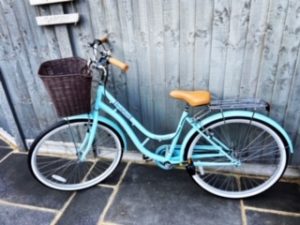
Mrs Atkins has been baking bread. So far she has tried white bread, sourdough, granary and spelt. What do you think?
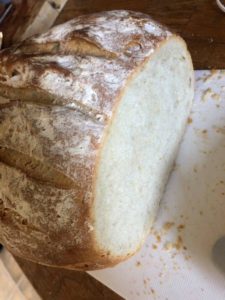
Here is the Home Learning for this week. Please remember that it is not a requirement to complete all of the tasks listed. Ideally, aim to do the Reading, Writing and Maths activities over the week and work on anything else in addition if you wish. Please don’t feel restricted by these activities either; if your child is motivated to do other Reading, Writing or Maths that is better centered on their interests, feel free to do these instead. We understand that all children are individuals and in these challenging times, value their security and happiness most of all.
Topic:
Why farming matters
Farming landscapes: farm landscapes are created by generations of farmers: they bring us food, provide habitats but also maintain the countryside for us to walk in and enjoy.
![]()
a. Look at the farm image and annotate with appropriate topic related vocabulary. Do you know the meaning of these topic related words? If not, speak to a grown up, use a dictionary or the internet to help you: pasture, arable, dry stone walls, buildings/shelters, tracks, hedges, crops, solar panels, wildflower margins, hedges, dry stone walls, tree belts, fences.
b. Can you identify natural and man-made/influenced features in the photos? A table may help.
c. Can you see any boundaries? What are these for?
English:
Take a look at the link below have a go at the activities. We suggest starting with the sentence work as it could help you write your story. Maybe you could email us your stories, we’d love to read them.
https://www.pobble365.com/the-life-of-a-snail
Guided reading:
This link takes you some guided reading all about snails. There are 3 different levels so choose the one that challenges you (but that isn’t too tricky) and complete the comprehension task. All the information can be found in the text – remember to use your skimming and scanning techniques to help find it.
HANDY HINT! Why don’t you try doing a read aloud think aloud (highlight and make notes) before you answer the questions.
https://content.twinkl.co.uk/resource/a9/bf/t-l-4614-snail-reading-comprehension-activity-_ver_2.pdf?__token__=exp=1588600765~acl=%2Fresource%2Fa9%2Fbf%2Ft-l-4614-snail-reading-comprehension-activity-_ver_2.pdf%2A~hmac=dea1706b09b0f4a7d49c3074de127db799269b8bcc3c4765ace6e483f2c81a7a
Science:
Can you make a daily diary of what you do to maintain a healthy lifestyle for the week? Record how many hours sleep you’re getting each night, how much exercise and what kind you are doing each day, are you drinking the recommended amount of water etc. After a couple of days, if you realise you’re not doing as much as you can to be healthy, can you make some changes and see if it makes you feel any different?
This could be recorded however you’d like – pictures, a table, on a computer etc. These links may help you:
https://www.bbc.co.uk/bitesize/topics/zrffr82/articles/ztsqfcw
https://www.theschoolrun.com/homework-help/keeping-healthy
Science from Miss Stapley THE SCIENCE OF OOBLECK
https://www.science-sparks.com/how-to-make-oobleck/
Did you notice that if you make a ball with oobleck or gloop it feels solid, but if you drop the oobleck on the floor it turns liquid again? The slime is a non – Newtonian fluid as it doesn’t flow like liquids normally do.
https://www.youtube.com/watch?v=Fnd-2jetT1w
Cornflour gloop ( oobleck ) is made up of molecules arranged in long chains. When the chains are stretched the liquid will flow, but when you force them together they stick together to form a solid.
OOBLECK RECIPE
• Cornflour
• Water
• Food colouring – optional
• Ice cube trays – optional
• Mixing bowl
• Colander, funnel and beakers – optional, but great for messy fun!
INSTRUCTIONS FOR MAKING CORNFLOUR GLOOP
• Fill a cup with cornflour and add to the bowl
• Add water very slowly mixing with your hands, until you get a sticky, slimy gloop.
• If you want to make it coloured add some food colouring. ( be careful this can stain skin and clothes)
• Play with the slime and see how it behaves. Can you make it into a ball? and what happens if you throw it onto the floor?
• Can you squeeze the slime into a ball? What does it feel like? How long does the ball stay solid after you let go?
• If you used less water do you think the slime would fall faster or more slowly through the colander?
OOBLECK CHALLENGE
Can you make a giant oobleck tray and walk on oobleck?
HOW TO MAKE A GIANT OOBLECK TRAY
To make our giant oobleck tray – pour about 1 kg of cornflour into a large black tray and slowly added water until the consistency was wet, but solid when squeezed.

Maths
This activity requires weighing scales. If you don’t have any, try making and using a DIY balance scale and a bit of creativity! Here’s an example… https://gosciencekids.com/diy-balance-scales-toddlers-preschoolers/
Heavier or lighter.
Find 5 objects in your house and order them from what you think is lightest to heaviest.
Then weigh the first one – use this weight to estimate the weight of the second object then weigh the second one. Was your estimate close?
Keep going along your line recording your estimation and the actual weight. Hopefully your estimates will get more accurate as you go on. Was your original order correct?
Choose two of your 5 items and compare their weight. Which is heavier and which is lighter. How do you know? Record your findings using the symbols. This can be repeated with different toys.
Example:
Barbie (104g) > Toy car (90g)
Have a go at these questions:

Spelling
This week we are revisiting rare graphemes for the /i/ phoneme. Say what you can see in the pictures below. Sound out the words and write them down. Note that in these words, the /i/ sound is made with a y or ui. Can you find some more unusual ways of making the /i/ sound?
Be a word detective – make a word web of as many words as you can find that contain an /i/ sound with a rare grapheme. Use these words to write into sentences. Challenge: How many words can you fit into one sentence whilst making sure it still makes sense?
ANSWERS TO PICTURE CLUES: gym, cygnet, building, mystery.
Art from Mrs Pearson :
Art Challenge Who’s YOUR SUPERHERO?
For this week’s Art Challenge I would like you to produce some art that is linked to a superhero. Your superhero can be real, such as our key workers, or someone in your family, or a fictional character from a comic, film or your own imagination. It can be a drawing, a figure made from a kitchen roll tube, street art or anything else that you can think of.
I hope this may inspire you:
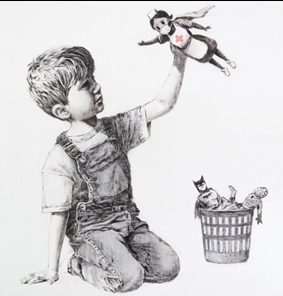
This new Banksy artwork has appeared at Southampton General Hospital.
It shows a young boy kneeling by a wastepaper basket dressed in dungarees and a T-shirt. He has discarded his Spiderman and Batman model figures in favour of a new favourite action hero – an NHS nurse. The artist left a note for hospital workers, which read: “Thanks for all you’re doing. I hope this brightens the place up a bit, even if it’s only black and white.”
However, if this doesn’t appeal to you then you can still send any other art work to me and I will post that on the Blog too.
Please email your artwork to me:
n.pearson@stpeterswaterlooville.hants.sch.uk
Thank you
Keep creating and keep safe!
Mrs Pearson
Music from Mrs Sumba
Go to the website below and watch Radzi Chinyanganya’s video about George Gershwin.
https://www.bbc.co.uk/teach/ten-pieces/classical-music-george-gershwin-rhapsody-in-blue/zkcy6v4
Why is Gershwin considered to be a musical trailblazer?
Now listen to the whole piece in the second video and create a cityscape as you listen.
RE learning from Miss Honeywell
As part of your RE learning, we would like you to focus upon the upcoming celebration of Pentecost – this day is celebrated fifty days after Easter Sunday, to remember how the Holy Spirit appeared to the Apostles of Jesus and gave them hope while they were in Jerusalem.
Can you complete ONE of the following activities, to develop your knowledge of this special time in the Liturgical Year?
– Create a religious crossword that includes the following key words and symbols: wind, flame, tongue, Holy Spirit, disciples, Jerusalem. Can you add more of your own? Don’t forget to record your clues!
– Design a celebration card to spread the Good News at Pentecost – could you post it to a friend to spread joy and hope at this difficult time?
– Write a drama script to ‘act out’ the scene of the disciples as Pentecost with your family at home – what happened to the followers of Jesus?
– Make 10 quiz questions about the Pentecost story. Could you ask a friend or family member about them when you next chat on the webcam/internet, or over the phone?
– Imagine you are a news reporter who has been sent to Jerusalem to find out more about the events that took place at Pentecost. Which 5W questions (who, what, where, when, why) would you ask the disciples?
– Build a model of one of the following Pentecost symbols (flame, wind, speaking in tongues, Holy Spirit) to put on display and remind you that Jesus is near. Which resources could you use from home? Plasticine, recycled plastic, painted cardboard?
– Research the story of Pentecost on the internet, from a Biblical website. Can you draw a thought bubble and record how the feelings of the disciples changed throughout the story?
Have a wonderful bank holiday weekend!
Miss Shaw, Mrs Atkins and Mrs Pike
Fantastic work
Have a read of Jack’s fantastic story he has created over the weekend- I hope you enjoy reading it as much as I did.
click here to read- Ninja Story
Well done Jack
Home learning 1st May
Happy first of May Happy Hippos and lovely Lions!
We have been very busy this week. Miss Shaw has been enjoying some lovely walks in the sunshine (before the horrible rain appeared) and went to a virtual baby shower! Maybe some of you remember Miss Whitehead? Well she is Mrs Rowley now and she is having a baby girl this month!
Mrs Atkins has continued to look after her garden before the rain decided to make an appearance! And is now trying to keep her two children occupied when being stuck inside (I’m sure everyone reading this can relate!)
This week it was Mrs Pike’s turn to give hairdressing a go… despite sharp scissors and a 17 month old that doesn’t stay still being a dangerous combination, Ollie looks quite good but its probably best that Mr Pike is in lock down for a while longer!
Here is your home learning for this week, we hope you enjoy it:
Topic:
We hoped you loved the video of Mrs Pike’s farm last week! Imogen loved creating it for you. Now for your topic this week we were hoping you were inspired enough to create your own farm! This could be out of junk modelling, sketching on paper, designing on a computer, making it out of Lego- however you want to! Think of all the important parts a farm needs to function- look back at Mrs Pikes video and see what you need to include.
As an extra challenge you can film your own farm tour video of the farm you have created.
https://www.youtube.com/watch?v=5dtJEoNiC2A
Guided reading:
Below is a link to a variety of recipes-
https://www.bbcgoodfood.com/recipes/category/family-kids
What do you need to make a ‘good’ recipe?
Rate which recipes were easier to follow/ read and why that was.
What must be included in a recipe?
Have you got a recipe at home you could follow and make something? Or use a recipe from the link.
English:
Below is a video on how to write a clear set of instructions.
https://www.bbc.co.uk/teach/class-clips-video/how-to-write-clear-instructions/zrvtscw
Here are some examples of instructions – some are funny and silly- https://www.literacywagoll.com/instructions.html
Can you create your own fun instructions?
For example how to make magic slime or unicorn food or how to wash an elephant.
Have fun- we can’t wait to see what you write about!
Maths
Using containers at home explore if this question is true or false. 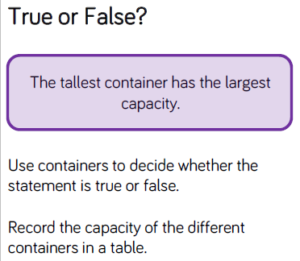
Now try these-
Capacity challenge- if you have completed the above tasks and want to, here is a challenge for you to try!
Science:
Attached are two PowerPoint’s. One of the PowerPoint’s explains in detail the difference between different types of food for example carbohydrates, protein etc.
Using this you can either plan your own menu for a three course healthy meal including a variety of food types
Or
we know you have drawn out a healthy plate but can you now make a fake healthy main meal, you could use play dough, Lego, junk modelling etc. There are some examples on the second PowerPoint.
LKS2_Science_Yr_3_Autumn_1_Keeping_Healthy_Session_2__PowerPoint LKS2_Science_Yr_3_Autumn_1_Keeping_Healthy_Session_2_Task_PowerPoint
Spelling
Apostrophes for contractions
Discuss- why is an apostrophe used for contractions?
Create a poster with the words below and how they are contracted using an apostrophe.
|
I will |
is not |
has not |
|
I am |
he will |
will not |
|
do not |
can not |
I had |
|
I would |
I have |
are not |
|
had not |
have not |
could not |
|
you are |
they are |
you will |
|
he will |
you have |
Challenge: can you think of a fun and interesting way to remember where the apostrophe goes- for example-
Music from Mrs Sumba
Florence B. Price
Go to the website below and watch Naomi Wilkinson’s video
https://www.bbc.co.uk/teach/ten-pieces/classical-music-florence-price-symphony-no1/z48rscw
Why is Florence B Price considered to be a musical trailblazer?
Watch the video again and practise the Hand Bone Dance with one, then 2 hands.
Now watch the 2nd video. Can you perform the Hand Bone Dance in time to the music?
Science from Miss Stapley
Other things to try – gently lay plain white paper on the surface and make a print of your colour swirls.
Other things to try – the shaving foam and sprinkles experiment. Squirt shaving foam onto a tray. Add coloured sprinkles over the top and watch how the colours mix as the sprinkles dissolve into the foam.
Further science experiments found at www.sciencemuseum.org.uk
Have fun!!
Art from Mrs Pearson:
Portsmouth Naval Base is looking to mark the occasion of VE day and need YOUR HELP! They have asked for you to draw pictures on the subject of WW2 & VE DAY and as an extra challenge try to incorporate a rainbow somewhere in the picture (even in the corner). The pictures will be displayed within the Naval Base and once the day is over they hope to make contact with local nursing homes to distribute the pictures to help cheer our elderly community. If you would like your work sent to the naval base you will have to email it to me by Monday evening. However, all work sent to me, even after Monday, will still be displayed, as usual, on the Art Blog.
In addition to the drawings for the Naval Base, I would appreciated any art and craft linked to this important historic occasion , such as
bunting, chalk drawings, figures of soldiers, planes or medals. I know, as always, you will blow me away with your imaginative ideas and creativity.
Please email your artwork to me:
n.pearson@stpeterswaterlooville.hants.sch.uk
Thank you
Keep creating and keep safe!
Mrs Pearson
History VE day home learning from Mrs Conlon
Friday 8th May is VE day celebrations so please take part in this home learning to engage with what the soldiers may have felt at this time.
Activity 1
Watch this video to learn about what VE day celebration means:
https://www.bbc.co.uk/teach/class-clips-video/history-ks2-ve-day/z7xtmfr
Read the extracts VE DAY and Belsen, VE Day in Germany and VE Day, As Seen from a Field near Venice.
Then-
- Highlight in red the words and phrases that indicate happiness.
- Highlight in blue the words and phrases that indicate relief.
- Highlight in green the words and phrases that indicate sadness.
Activity 2
After reading the extracts and doing any other research using online resources about VE day, imagine you are soldiers being interviewed by the BBC news correspondent on VE Day. You need to portray how the soldiers felt about the end of the war and what they felt their role was in order to help prepare for peace. You will need to be reminded that they will need to consider the impact that fighting during the war would have had on these men.
If possible, record yourself speaking about your recount and email Mrs Conlon the video link to put it onto the school curriculum blog via her class email address:
starfishclass@stpeterswaterlooville.hants.sch.uk
If you would like to write a newspaper article instead of an interview then please do so and email me a photo of your work to add to the blog.
Have lots of fun learning all about this special celebration.
I am looking forward to seeing your great history learning.
Best regards
Mrs Conlon
(History lead teacher)
Below is a link to a bank of ideas on how you can use your baking/ cooking time as an opportunity for learning in lots of different subjects.
https://www.bbc.co.uk/food/articles/learning_through_cooking
Have a wonderful week!
Miss Shaw, Mrs Atkins and Mrs Pike

